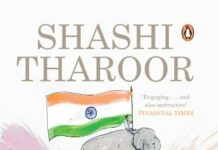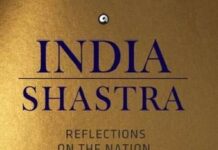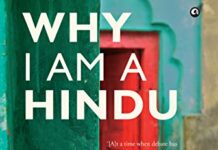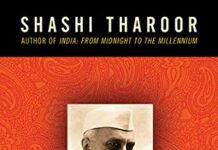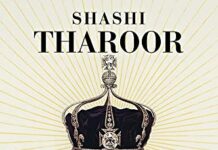
Ebook Info
- Published: 2016
- Number of pages: 360 pages
- Format: PDF
- File Size: 7.69 MB
- Authors: Shashi Tharoor
Description
In 1930, the American historian and philosopher Will Durant wrote that Britain s conscious and deliberate bleeding of India… [was the] greatest crime in all history . He was not the only one to denounce the rapacity and cruelty of British rule, and his assessment was not exaggerated. Almost thirty-five million Indians died because of acts of commission and omission by the British in famines, epidemics, communal riots and wholesale slaughter like the reprisal killings after the 1857 War of Independence and the Amritsar massacre of 1919. Besides the deaths of Indians, British rule impoverished India in a manner that beggars belief. When the East India Company took control of the country, in the chaos that ensued after the collapse of the Mughal empire, India s share of world GDP was 23 per cent. When the British left it was just above 3 per cent. The British empire in India began with the East India Company, incorporated in 1600, by royal charter of Her Majesty Queen Elizabeth I, to trade in silk, spices and other profitable Indian commodities. Within a century and a half, the Company had become a power to reckon with in India. In 1757, under the command of Robert Clive, Company forces defeated the ruling Nawab Siraj-ud-Daula of Bengal at Plassey, through a combination of superior artillery and even more superior chicanery. A few years later, the young and weakened Mughal emperor, Shah Alam II, was browbeaten into issuing an edict that replaced his own revenue officials with the Company s representatives. Over the next several decades, the East India Company, backed by the British government, extended its control over most of India, ruling with a combination of extortion, double-dealing, and outright corruption backed by violence and superior force. This state of affairs continued until 1857, when large numbers of the Company s Indian soldiers spearheaded the first major rebellion against colonial rule. After the rebels were defeated, the British Crown took over power and ruled the country ostensibly more benignly until 1947, when India won independence. In this explosive book, bestselling author Shashi Tharoor reveals with acuity, impeccable research, and trademark wit, just how disastrous British rule was for India. Besides examining the many ways in which the colonizers exploited India, ranging from the drain of national resources to Britain, the destruction of the Indian textile, steel-making and shipping industries, and the negative transformation of agriculture, he demolishes the arguments of Western and Indian apologists for Empire on the supposed benefits of British rule, including democracy and political freedom, the rule of law, and the railways. The few unarguable benefits the English language, tea, and cricket were never actually intended for the benefit of the colonized but introduced to serve the interests of the colonizers. Brilliantly narrated and passionately argued, An Era of Darkness will serve to correct many misconceptions about one of the most contested periods of Indian history.
User’s Reviews
Editorial Reviews: Review Got my Kindle edition 2 days back & I’m so grateful that it cut short my wait by around 20 days. This is one book which falls in the unputdownable category (i had always thought that this term is absurd and exaggerated) but as i started reading An Era of Darkness ,I just couldn’t Stop reading.This generation knows so little about history apart from what we mugup for our history exams.This book categorically dispels some wrong notions that some might have been holding to, also it awakens you to a painful realisation of facts that history books dont dwelve into and leaves you with many whatifs.It is a must read for each and every full blooded Indian.It strikes a patriotic chord and leaves you humbled and saddened at the same time.Id go to the extent of saying that this is his best book ever. –By deepali mohokar on 30 October 2016Shashi Tharoor’s ‘An Era of Darkness’ is brilliant. It is a solid extension of his Oxford Speech which had gone viral, so anyone who’s interested in forming more knowledge about the British Empire in India, this book could very well be their handbook. It is enlightening, lucid and unbiased. –By SB on 8 November 2016Not a conventional history textbook! An Era of Darkness wonderfully enlightens us about various facets of India s ignored glorious past and simultaneously argues how the scandalous Raj robbed us of it. Every young Indian must read. –By Ruhi on 9 November 2016 About the Author Shashi Tharoor is the bestselling author of fifteen previous books, both fiction and non-fiction, besides being a noted critic and columnist. His books include the path-breaking satire The Great Indian Novel (1989), the classic India: From Midnight to the Millennium (1997), and most recently, India Shastra: Reflections on the Nation in Our Time (2015). He was a former Under Secretary-General of the United Nations and a former Minister of State for Human Resource Development and Minister of State for External Affairs in the Government of India. He is a two-time member of the Lok Sabha from Thiruvananthapuram and chairs Parliament s External Affairs Committee. He has won numerous literary awards, including a Commonwealth Writers Prize, and was honoured as New Age Politician of the Year (2010) by NDTV. He was awarded the Pravasi Bharatiya Samman, India s highest honour for overseas Indians.
Reviews from Amazon users which were colected at the time this book was published on the website:
⭐This 2016 book about British colonial rule made me understand the meaning and force of “check your privilege.” The author, Shahhi Tharoor, has written many books and has had an extensive career (after earning his PhD at 22 years!) as an Indian politician and international diplomat.Tharoor’s documents how the British harmed existing, thriving communities during their rule and explains how their misguided and/or intentionally harmful policies still undermine development in the Indian subcontinent.(Recall that the East India Company [EIC] converted trading posts into a de facto colonial rule between 1613 and 1857. After the Indian Mutiny of 1857, the Crown ruled the territories as part of the British Empire, also called the Raj. These territories included present day India, Pakistan and Bangladesh, but I will refer to them collectively as “India.” The Empire had significant influence on Sri Lanka, Nepal and Afghanistan. The book does not cover events in other territories of the Raj, but they show up as colonial administrators in London move people, goods and money in one giant game of Risk.)**Aside: my personal story**Long time readers will know that I have some connections to India, so I was fascinated by Tharoor’s steady demolition of the legends and excuses justifying White Man’s rule over Brown People who neither asked for nor received “development”.This book contextualized my family’s history in colonial India. First, there is the fact (via DNA testing) that my father is “one-third” Indian. This ratio is unfamiliar to anyone who thinks of ancestors in terms of halves, quarters, and so on, but it reflects (I think) the intermingling of various (un)acknowledged ancestors over the many generations. (All 4 of my father’s grandparents were born in India. At least half his great-grandparents were, with the rest “born unknown.”) Tharoor notes that the British were far more open to forming families and marrying in the EIC era, so it is easy for me to believe that our ancestors were having children in the open or in secret, whether or not their names appeared in official records or their original (native) spellings.Second, Tharoor provides abundant evidence of how the British lived at native expense. Wages to white men were 20-40x higher than wages to locals doing the same jobs. Such wealth explains why white mem-sahib’s had servants for every domestic task . White men also enjoyed privileged trading rights, government contracts and other sources of “rents” that would allow them to make easy money on the initiative and hard work of locals forced to use them. (These contracts are still used to enrich citizens of Gulf States — Saudi Arabia, Kuwait, Dubai, et al. — who act as local partners of the foreigners who want to do business there.) My grandfather worked as one of a dozen Assistant Under Secretaries. His brother traded goods with the “home country.” (I would love to get more information on these roles, but I’ve never had the time to dive into the archives.)Third, the British enjoyed a degree of political power and legal impunity that made it easy for them to (literally) get away with murder. They were allowed to do as they pleased, since Indians had hardly any power to question, judge or condemn abuses. I wish I could ask my father’s parents about their transition from power to forced retirement on their 1949 “return” to England — a place they may never have seen. I assume their pension was entirely inadequate to support a colonial lifestyle in Post-WWII England, and I am sure they were shocked to meet the English working classes.**Interesting facts and ideas**I highlight passages that are novel or present familiar ideas in elegant ways. These notes are neither balanced nor complete because they omit ideas I know and emphasize ideas that interest me.Tharoor points out early on that Indians share responsibility for their development as well as (for some) collaboration with the British. These facts aside, he asserts that colonialism hindered India’s development.British at home complained of colonial “nabobs” (a mispronunciation of the Indian title of “nawab”) who had grown rich without talent and then returned as nouveaux riches to invade high society.The EIC levied swinging taxes on farmers and returned no public goods. The money was sent to London, and poverty and hunger skyrocketed among peasants.The British displaced village and regional judicial, economic and political governing bodies with centralized rule by whites who had no historic, cultural or linguistic connections to those they ruled, destroying institutions with a thousand years of functional experience. One 24-year old ruled over one million people across 4,000 square miles as tax collector, criminal and civil judge, land administrator, and 7-8 other titles!EIC rule grew more despotic as time passed. In the 1750s, the EIC was taking over territory by force and seizing tax powers from the local rulers they defeated in “treaties.” (This pattern dates back to the conquest of the New World in the 1500s and extended into the colonization of Africa in the late 1800s. Such “treaties” were also used to subjugate China after the Opium Wars of the mid-1800s, which may explain China’s nonchalant pursuit of similar policies in recent years.)The British obsession with written procedures and binding decisions subjected locals to inflexible, one-size-fits-all rules that connected locals would try to influence while the majority suffered. In the pre-colonial past, local rulers had debated and ruled in public, according to local conditions.Tharoor, a member or Parliament, thinks that India needs a different political system, i.e., one that separates executive and political roles. Given the shambles of India’s Parliament, where 35 percent of MPs face criminal charges and personalities dominate parties and platforms, I agree.India was originally a “gender fluid,” sexually tolerant society (have you seen its temples?), but the British criminalized most non-heterosexual, unmarried lifestyles.Nearly all British laws — on sex, free speech, labor, etc. — were intended to strengthen rule rather than foster development. It is in this sense that the British set India‘ s development back a few centuries. India and Britain’s share of world GDP were 23 and 1.8 percent in 1600. At independence (1947), these shares had reversed to 3 and 10 percent.Tharoor shows how colonialism introduced intolerance, corruption and dysfunction. The British did not try to understand India’s ethnic, religious, and caste diversity as much as simplify, categorize and fossilize divisions into familiar boxes imported from home. It did this to facilitate rule by outsiders ignorant of local nuances, to impose their superior culture on others (most obviously by codifying fluid and changeable castes to match their notions of class), and to divide and rule by emphasizing Muslim minority status and Brahmin’s “natural” rule over lower castes. It is hard to understate the massive damage of these interventions, which are — in my opinion — mostly responsible for ongoing sectarian strife within India and between India and Pakistan as well as the corruption of caste-based political parties and discriminatory laws. (The ruling BJP trying to remove Muslims from its history, culture and geography.)Hindus and Muslims cooperated during the 1857 Mutiny. The shocked British expanded their “divide and rule” techniques to emphasize the differences between these groups (and many other subdivisions). The prejudices they introduced resulted in the split of East and West Pakistan from India, several wars, and endless sectarian strife.India had always produced enough food, but 35 million starved due to British policies of exporting food to “home.” Note that the population during the colonial era was around 200 million, so that’s also a massive share (around 5 percent) of the population, equivalent to, say, 15 million Americans dying today of government-induced starvation. (Not even Trump is that bad.)In the 1519-1939 period, the British “migrated” 5.3 million people, of whom 58 percent were African slaves, 36 percent were Indian indentured laborers, and 6 percent were convicts. The death rate en route among transported Indians was worse than that of slaves. Much of India’s diaspora in the Americas and Southeast Asia was brought by force.The railways were built to exploit locals. Passengers subsidized freight and investors made a fortune lending money for a system that cost nine-times the price per mile of American railways. Locals were prevented from running the system; equipment had to come from the UK.The British used education for exploitation. They shut down the continent’s system of local schools and switched students to English because that was the language of the rulers. In the process they destroyed higher education. (Nalanda University had 2,000 teachers and 10,000 students learning in Sanskrit, Urdu, Persian and Arabic before Oxford or Cambridge were founded.) The British had no use for local knowledge or education. At independence, India had fewer schools than centuries earlier and a literacy rate of 24 percent for boys and 8 percent for girls.Post-independence India’s disastrous turn to socialism (and ongoing embrace of chaotic bureaucracy) can be traced to a rejection of “capitalism” (as practiced on them) and a colonial educational system devoted to paper-pushing.Read “The Brown Man’s Burden” here for a rejoinder to Kipling’s “White Man’s Burden.”**The impact of colonialism on development**Turning from my notes, I’d like to make a few observations of the importance of colonialism on the growth (quantity) and development (quality) of a country.First, institutions (formal rules and informal norms) play an enormously important role in how people interact in peer-to-peer (e.g., community and markets) and power (e.g., political governance) settings. Colonial rule usually displaces and interferes with local institutions with disastrous results because colonial powers are often interested in transferring wealth “home” rather than building prosperity locally.Second, colonials mistook power for wisdom. Local culture takes decades to understand, let alone augment. Colonial powers ignored that fact and replaced local solutions to local problems with imported, oversimplified, mistaken policies that failed.Third, colonials were interested in resources they could carry away (gold, wood, fish, oil) rather than local economic activities or the local environment. In such a “resource curse” situation, they would favor the resource sector, undermine the local economy, and destroy the environment that residents needed for there physical and mental health. Their administrative systems of exploitation also undermined democracy and popular participation, as the one and only goal was wealth extraction.Fourth, colonial shocks put the vast majority of the world’s population on a worse development path. With the exception of Europe, the “Anglosphere” colonies (Australia, Canada, New Zealand, and the US) and the few non-colonized countries in the world, the net damage (benefit to colonizers less harm to those colonized) is surely negative in terms of wealth, physical and mental health, and political autonomy and freedom.Fifth, the disaster of Brexit is being mismanaged by the same types who mis-ruled India and the rest of the Empire.Sixth, many academics have a hard time explaining the impacts of colonialism because they compare different post-colonial results (using “colonized by the French” or “colonized by the English” as dummies in regressions) rather than considering where the countries (or regions, given how inappropriate colonial borders were) would be in the “counterfactual” world without colonialism. It is in this sense that we both underestimate the damage of colonialism and overestimate the success of “the West.”My one-handed conclusion is that anyone lucky enough to live in a country with a colonial past (and that includes the US) should remember that much of their current prosperity and opportunity relative to colonized countries reflects historic rape and pillage more than virtuous hard work. I highly recommend that you read this book (or others written by colonial subjects) to learn how lucky you are — and the challenges that others face.
⭐The author covers in great detail how the GDP of India, which along with Persia, constituted more than half that of the entire world in 1600 was reduced by the invasion of British mercenaries who plundered their way through India. Even worse the English suppressed the production of high quality steel mills in India which were superior to anything in the rest of the world and the techology appropriated by the English. Even the production of fine silk cloth with which the crude cotton cloth of English textile mills could not begin to compare was ended when the British cut off the thumbs of weavers in India. After World War II when the people of India finally succeeded in ejecting the British they were left with a time bomb with the partition of India that resulted in the deaths of 2 million more people. By 1950 the GDP of the UK had shrunk but 75% and it was the result of no longer being able to exploit the people of India.Not covered but part of the picture are centuries of conflict between Russia and England with the latter wanting to hold onto and continue to enrich itself from India and the need to protect the perceived path through Afghanistan into the Indian continent. Even World War II lasted for at least 2 additional years as Churchill insisted on protecting the Suez Canal so as to protect access to its colony of India and allowing the Germans to build up their defenses in France and Italy for which allied soldiers paid dearly.
⭐In the debate at the Oxford University Union on May 28, 2015, Shashi Tharoor spoke for the motion “This House believes Britain owes reparations to her former colonies. His speech has garnered more than 3.6 million views. Shashi Tharoor wrote this book to cash in on that popularity.I began researching his arguments presented at the debate around May 2016 and discovered he had used statistics to support his conclusions which actually lead to opposite conclusions. For example, he stated about 1.3 million Indians served in World War I. India supplied 70 million rounds of ammunition, 600,000 rifles and machine guns, 42 million garments were stitched and sent out of India. India also supplied 173,000 animals and 370 million tons of supplies when there was a recession going on in India. His implication is that all this hurt India. However, he demonstrated a lack of understanding of basic economics in that such massive increase in employment and economic activity would only have alleviated a recession.I was thus skeptical about his arguments and continued further research. When this book was published I ordered a copy. Tharoor has revealed his hand completely as to where he is coming from. I found the book to be full of lies in order to deceive and demonize British colonial rule. Here are illustrative examples.He quotes J.T. Sunderland on p. 3:”Nearly every kind of manufacture or product known to the civilized world – nearly every kind of creation of man’s brain and hand existing anywhere, and prized either for its utility or beauty – had long long been produced in India. India was a far greater industrial and manufacturing nation than any in Europe or than any other in Asia. Her textile goods – the fine products of her looms, in cotton, wool, linen and silk – were famous over the civilized world; so were her exquisite jewelry and her precious stones, cut in every lovely form; so were her pottery, porcelains, ceramics of every kind, quality, color and beautiful shape; so were her fine works in metal – iron, steel, silver and gold. She had great architecture – equal in beauty to any in the world. She had great engineering works. She had great merchants, great businessmen, great bankers and financiers. Not only was she the greatest ship-building nation, but she had great commerce and trade by land and sea, which extended to all known civilized countries. Such was the India which the British found when they came.”Reading this description one would think India was a paradise before the British came. There are several outright lies in this account. The only products India was known all over the Middle East, Europe and Southeast Asia was its well sought-after textiles. India never had pottery, porcelains or ceramics that were known all over the civilized world. This is a blatant lie. China had that distinction. Another lie is that India was the greatest ship building nation when the British came. In fact, the sea trade with the Middle East was shared with the Arabs who were the dominant partners as they supplied Europe. India was not the greatest ship building nation when the British came. Another massive exaggeration is that India had great commerce and trade by land and sea which extended to all known civilized countries. Most of the other statements like great engineering works are also exaggerations.Tharoor builds his case with such gross exaggerations, half truths and outright lies throughout his book. Here are more examples:Tharoor writes on p.22, “Within thirty years (presumably from Battle of Plassey in 1757 to 1787) land revenue collected just in Bengal went up from £817,553 to £2,680,000. The extortion might have been partly excused if the taxes were being returned to the cultivators in the form of public goods or services, but the taxes were sent off to the British government in London.”The latter part of the period was during the tenure of Warren Hastings as governor-general. Tharoor does not cite his sources. But in 1772, the company faced a financial crisis. (John Riddick, “A History of British India: A Chronology” p. 20). About 20 important financial houses went bankrupt in London and Edinburgh and for some time the EIC stopped making payments. On August 7, 1772 the Company asked for postponement of customs duties in the amount of £203,619. On September 24, the Company announced that a dividend for the six months would not be paid. On October 28 the Company indicated the impossibility of making its annual payment of £400,000 to the government. The company was refused a loan by the Bank of England. The total accumulated deficit of the Company totaled £1,948,549.The Regulating Act of 1773 bailed out the Company by giving a loan of £1,400,000. In 1772 the Marathas were threatening the Rohillas which required British intervention. In 1774 there was war with the Rohillas. In 1775, the English had to intervene in the Maratha struggles with succession and the First Anglo-Maratha War was fought which continued till 1782 and ended with the Treaty of Salbai. At the same time the Second Anglo-Mysore war was fought between 1780-1783. Hastings had to use some high-handed methods to raise money to finance these wars for which he was impeached and lost most of his savings in legal defense costs. It is difficult to understand how all the land revenues of Bengal could have been sent to England at this time as Tharoor claims. Since he does not cite any sources, he simply misrepresents as he chooses.Here is another classic outright fabrication on p. 25 which Tharoor borrows from Will Durant’s “A Case for India”: “In 1922, for instance, 64% of the total revenue of the Government of India was devoted to paying for British Indian troops despatched abroad. No other army in the world, as Durant observed at the time, consumed so large a proportion of public revenues.”On p. 27 Tharoor provides a list of foreign deployment of Indian troops, but he does not list any deployment in 1922. The First World War had already ended in 1918. He and Durant just make up lies as they please to buttress their position. That is how unreliable most of their statements and statistics are. The book is full of half-truths, gross exaggerations, misrepresentations, extrapolation of a negative incident or a short 5 yr or 30 year period to extrapolate it to characterize and demonize the entire 190 years of British rule in India.Tharoor seems to belong to a mutual admiration society of British Colonial rule bashers who use similar deceptive tactics as Tharoor has used in this book and cite each other as authorities.When I heard his speech at the debate, I came to the conclusion that he was close to being labeled the Native American legendary bird “The Walking Eagle.” This bird is so full of trash that it cannot fly. With this book Tharoor has earned that label many times over and another one to boot; “The Indian Goebbels.”If you like being deceived, you may waste your money by buying this book.
⭐In his precisely worded book “An Era of Darkness”, Shashi Tharoor puts forth many powerful arguments, that will no doubt convince the staunchest Anglophile, about why the British rule in India meant nothing but violence, injustice and deprivation. This extensively researched book describes in great detail the physical and emotional value of the loot and damage that the country suffered because of the excesses of the East India Company officials. It makes for a difficult read, especially for a generation that was not affected by the British rule, and tends to forget or ignore the sacrifices and sufferings of our forefathers. It is a brilliant book, but I give it a 4 because of the one-sided argument of a skilled debater. There is no mention of the many excellent research and educational institutions, the extensive railway system, the system of government or the judiciary that India has today; all a legacy of the British Raj rule. This in my opinion is the flaw of this otherwise excellent book.
⭐This is a book that should be a compulsory text book for all history lessons in schools here so that children will know and understand the dark deeds as well that were perpetrated on the countries of the Commonwealth and not only the glorious victories of GREAT BRITAIN’s EMPIRE and of Britannia ruling the waves!
⭐Sashi Tharoor has brilliantly elucidated the loot and the deceit indulged in by the British. He has successfully carried the conviction with the readers with irrefutable facts and impeccable presentation. Overall, the book is simply brilliant and is a must read. The lone sore spot is that the packaging of the product (book) is very poor and it came crumpled at its edges. In fact, rating have to be 4 stars, but keeping in mind the value of the content of the book I am giving it 5 stars. I have bought a number of books on Amazon but shabby packaging, though price is very reasonable and the quality is good, has forced a rethink on ordering some more books. Sincerely hope that the product comes in good shape when I order my next book.
⭐Important History, Heritages to many Hindus & others in their understanding of atrocities, Treacheries that their Ancestors once faced and by all means none of their descendants should face same atrocities
⭐Only part way through the book, and although extremely informative, the writing style and content does seem to bounce around quite a bit making it difficult to become totally engrossed.
Keywords
Free Download An Era of Darkness: The British Empire in India in PDF format
An Era of Darkness: The British Empire in India PDF Free Download
Download An Era of Darkness: The British Empire in India 2016 PDF Free
An Era of Darkness: The British Empire in India 2016 PDF Free Download
Download An Era of Darkness: The British Empire in India PDF
Free Download Ebook An Era of Darkness: The British Empire in India
